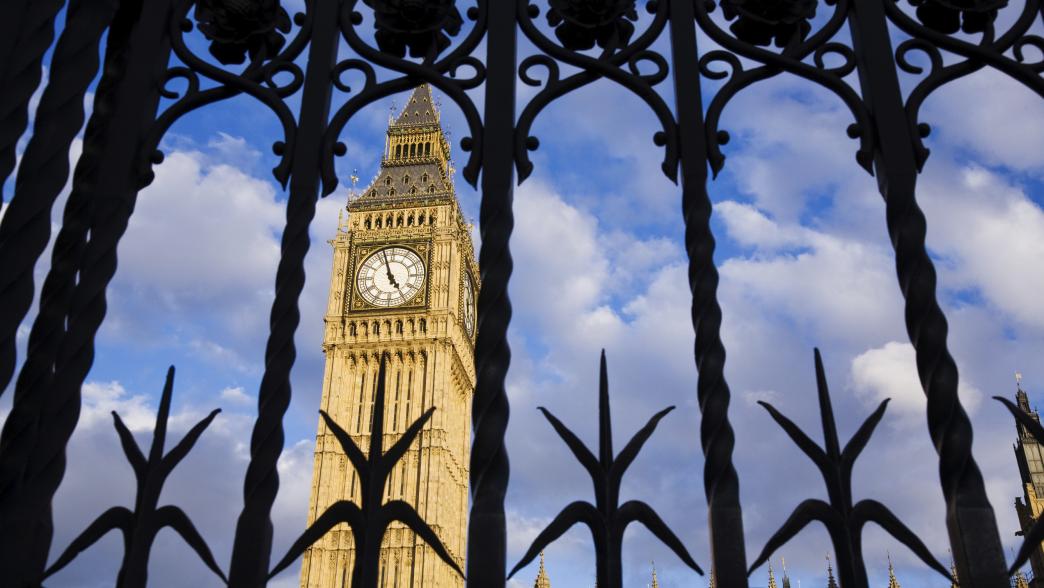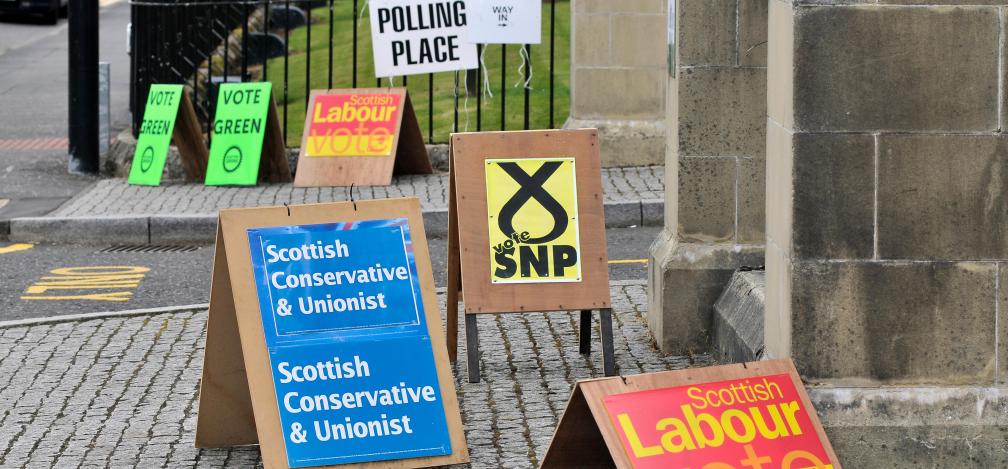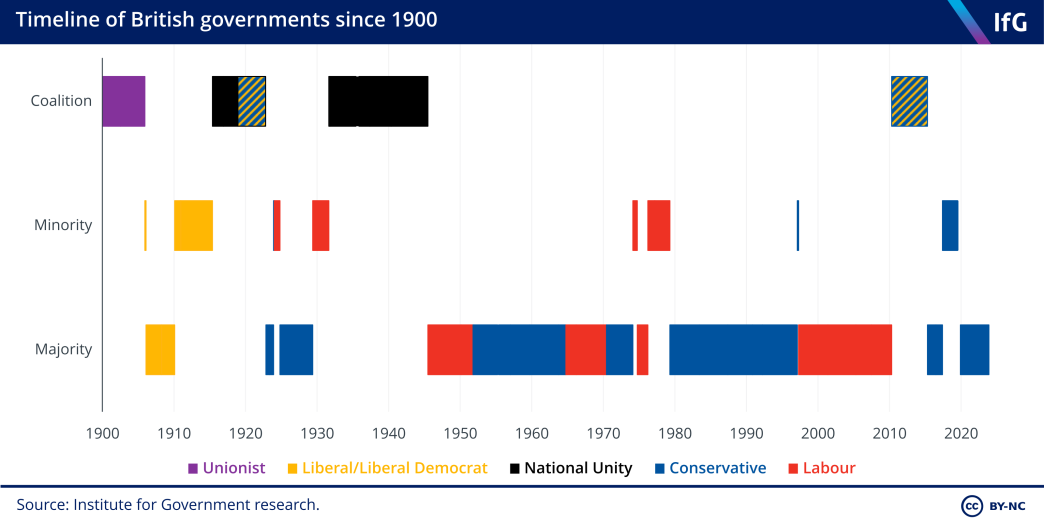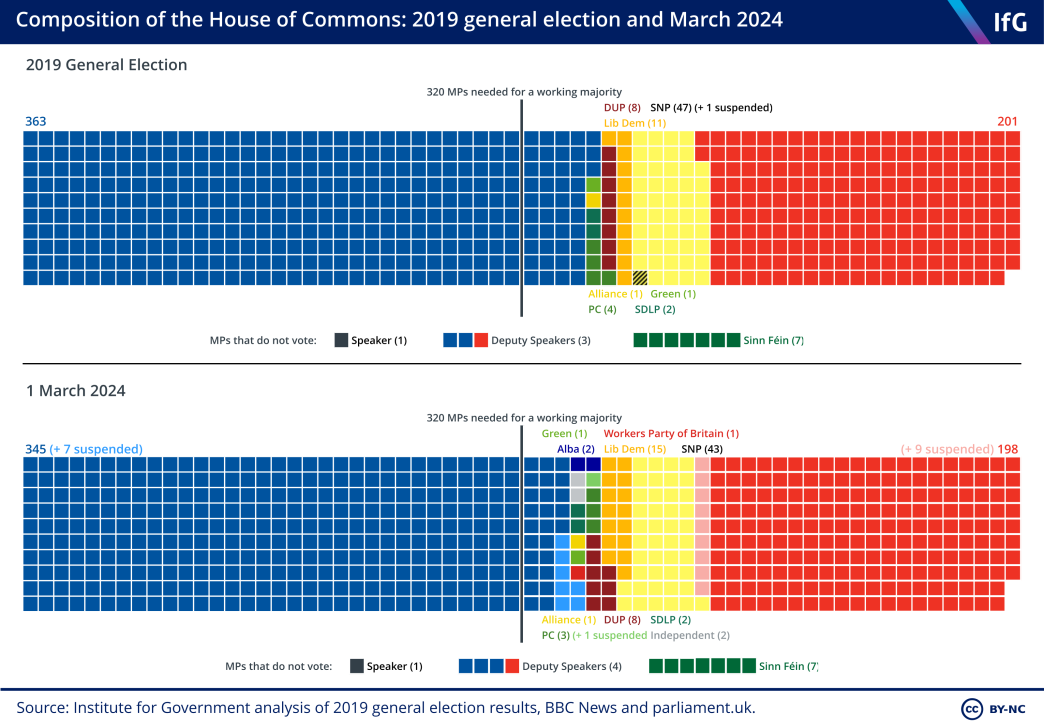Hung parliaments
A hung parliament occurs when no party holds a majority of seats in the House of Commons.

What is a hung parliament?
A hung parliament occurs when no party holds a majority of seats in the House of Commons. This means that any government formed is either a coalition or a minority government.
A hung parliament most commonly follows a general election in which no party wins a majority. However, hung parliaments can also occur between general elections if the government loses its majority. This might happen as a result of MPs defecting to other parties or because of by-election defeats following resignations, deaths, expulsions from parliament or MPs being recalled by their constituents.
Has there ever been a hung parliament in the UK?
Three general elections since 1945 have returned a hung parliament: February 1974, May 2010 and June 2017. In addition, two governments lost their majority while in office: James Callaghan’s Labour government in 1976 and John Major’s Conservative government in 1997.
With no parties holding a majority following the 2010 election, Gordon Brown, the incumbent prime minister, attempted to form a coalition with the Liberal Democrat Party. After five days of talks between the three main parties, it became clear that the Lib Dems would rather form a coalition with the Conservatives than Labour. Brown tendered his resignation to Queen Elizabeth II and the Conservative–Liberal Democrat coalition governed for the whole of the 2010–15 parliament.
More recently, the Conservatives lost their majority in the 2017 general election. The party remained in power through a confidence and supply agreement with the Democratic Unionist Party (DUP). The government did not receive unwavering support from the DUP on all proposed legislation, but did survive a motion of no confidence in January 2019 through DUP support.
After expelling 21 of its own MPs in September 2019, the Conservatives, even with the DUP’s support, governed as a minority government until the general election in December 2019, when they won a majority.
Hung parliaments: What are parties' options if a general election returns no clear winner?
Despite the recent experiences of the 2010–15 coalition and 2017 Conservative–DUP confidence and supply agreement, understanding of multi-party government among the UK’s main national political parties is limited.
Read the report

How many MPs does a party need to have a majority?
There are 650 MPs elected to the House of Commons, meaning that a simple seat majority would be 326. However, for various reasons some of these MPs don’t usually take part in parliamentary votes, making the number required for a majority smaller.
By convention, the Speaker and his or her three deputies only take part in votes under very narrow circumstances. MPs from Sinn Féin – the Northern Irish nationalist party – refuse to take up their seats in parliament, and so do not take part in votes either.
Therefore, the working majority is normally fewer than 325+1. The current number of MPs required to command a majority is 320. As of March 2024, the government has a working majority of 52.

What happens when there is a hung parliament after an election?
The government is formed by the party or group of parties that is ‘most likely’ to be able to command confidence. Commanding confidence means that they are likely to be able to win crucial votes, for instance on budgets, and survive motions of no confidence. There are three types of government that they can form:
- A formal coalition: This is where two or more parties, who collectively have enough MPs to command a majority, form a government together. MPs from both parties receive ministerial and cabinet positions.
- A minority government with a confidence and supply agreement: Less comprehensive than a coalition, a confidence and supply agreement means that other parties provide support on all motions of ‘confidence’ in the government, as well as all votes of ‘supply’, which includes key votes on the use of government finances, such as the budget. In exchange, the supporting party will be given influence on agreed policy areas, although they will not receive ministerial positions or seats in the cabinet.
- A minority government without formal support from other parties: Even without a formal agreement, other parties may still support or abstain on key votes if it is in their interests. A minority government may also strike ad hoc deals with other parties to support individual bills, potentially with some amendments.
Who decides if a government can command confidence?
The King appoints the prime minister, but he must be kept out of political controversy. It is for the parties to establish who is most likely to command confidence. Buckingham Palace is kept informed by officials of the progress of any negotiations.
Prospective governments do not always need formal agreements to show they can command confidence. If it is clear that a party will not have the ability to command confidence – for instance, if other parties on whose support it would rely have said they could not support such a government – then this would count against it.
It is also possible for the incumbent government to continue in office and test the confidence of the House in a King's Speech or confidence motion. If such a vote is lost, the government would be expected to resign immediately.
How can the government lose confidence?
Minority governments can continue in office for as long as they do not lose votes that signify a loss of confidence. In the past, government defeats on major votes that had been declared a confidence matter, or ones that were by convention regarded as denoting confidence, would have been enough for a government to resign or seek an election. Losing a Queen’s or King’s Speech was usually a clear demonstration of lost confidence.
What happens if there is disagreement about who can command confidence?
There must be a government at all times, so following a lost confident vote the incumbent government would usually stay in post until it is clear who can form a government. It would effectively be acting in a caretaker capacity.
If there is a hung parliament following an election, then negotiations can continue indefinitely, though the UK is not used to long periods of government formation. If a hung parliament saw a government lose a vote of confidence, it would then be down to parliament to decide whether any parties could attempt to form an alternative government or whether they would proceed to an election.
If more than one person has a claim to being appointed prime minister, then there is a risk that this could bring the King into the dispute by forcing him to choose. If one candidate is able to demonstrate that they can command confidence – whether through winning a vote of confidence, or by publishing a ‘confidence and supply’ or coalition agreement with other parties – then this can provide the necessary clarity to the palace, ensuring that the King avoids political controversy. It is therefore expected that politicians resolve any impasse between themselves so that unambiguous advice can be presented to the King about who he should appoint.
- Keywords
- Hung parliament
- Position
- Prime minister Deputy prime minister
- Legislature
- House of Commons
- Publisher
- Institute for Government